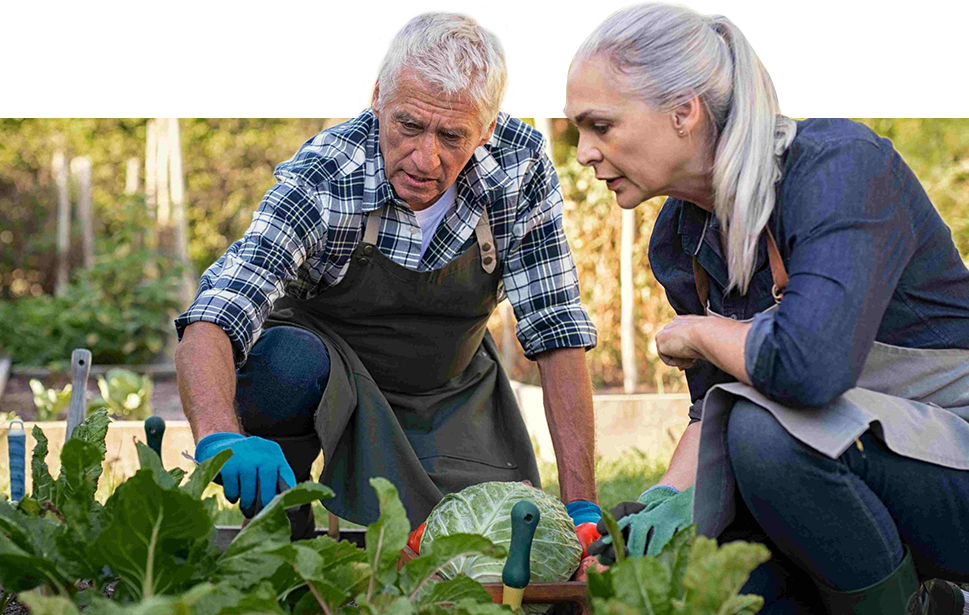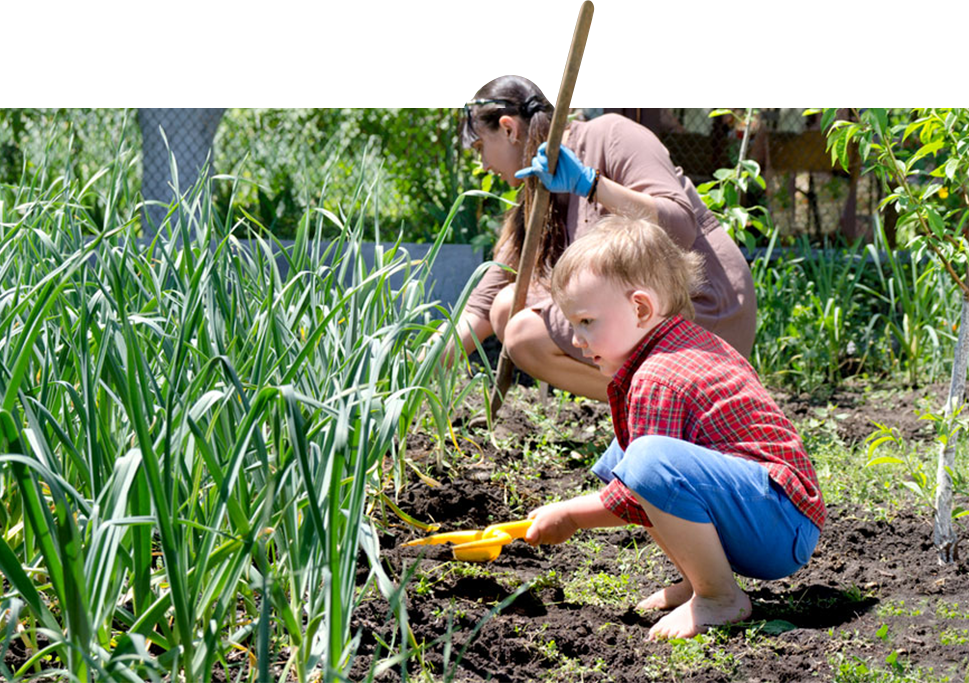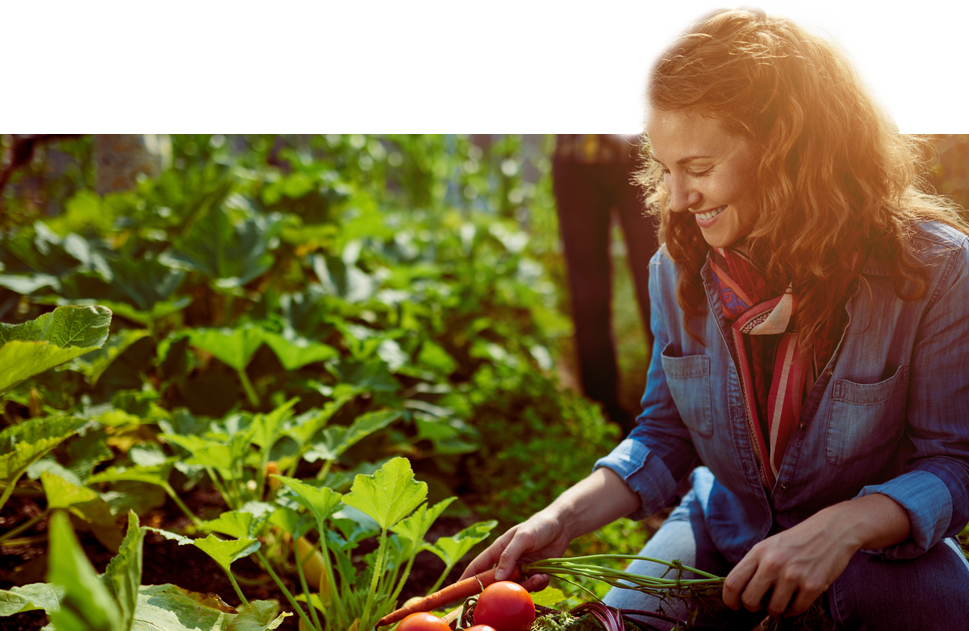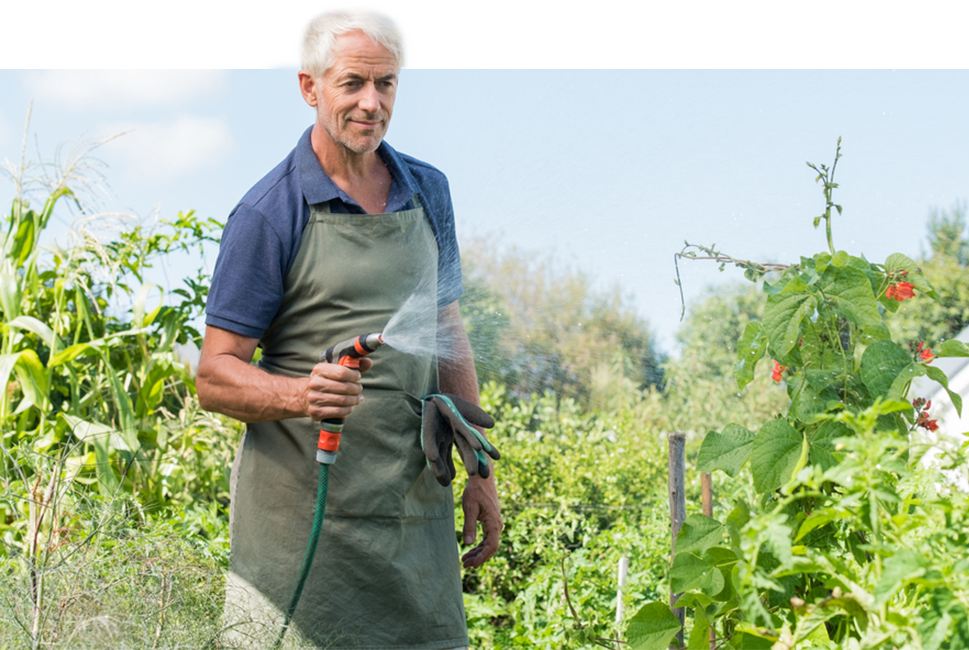Getting Started
Plant Hardening
Your kit is a box full of babies-- plant babies! Just like babies don't like to be swaddled for too long, so your plants don't like to be in a dark box for a long time. If you know where you're going to plant, that's great! Be sure to get your babies nestled into their new home as soon as you can after you receive them.
If you need a bit of time to sort out where to plant, we recommend cutting off the lid of the shipping trays and standing your plants upright in them. You can put a little bit of water in the bottom of the trays (1/8-1/4" of water) so that they don't get thirsty, and set them in a bright place (a place where they'll get sun half the day is great!). You can keep them like this until their new home is ready, but we do recommend getting them into their new home as soon as you can. Click HERE for more information on plant hardening.
Learn More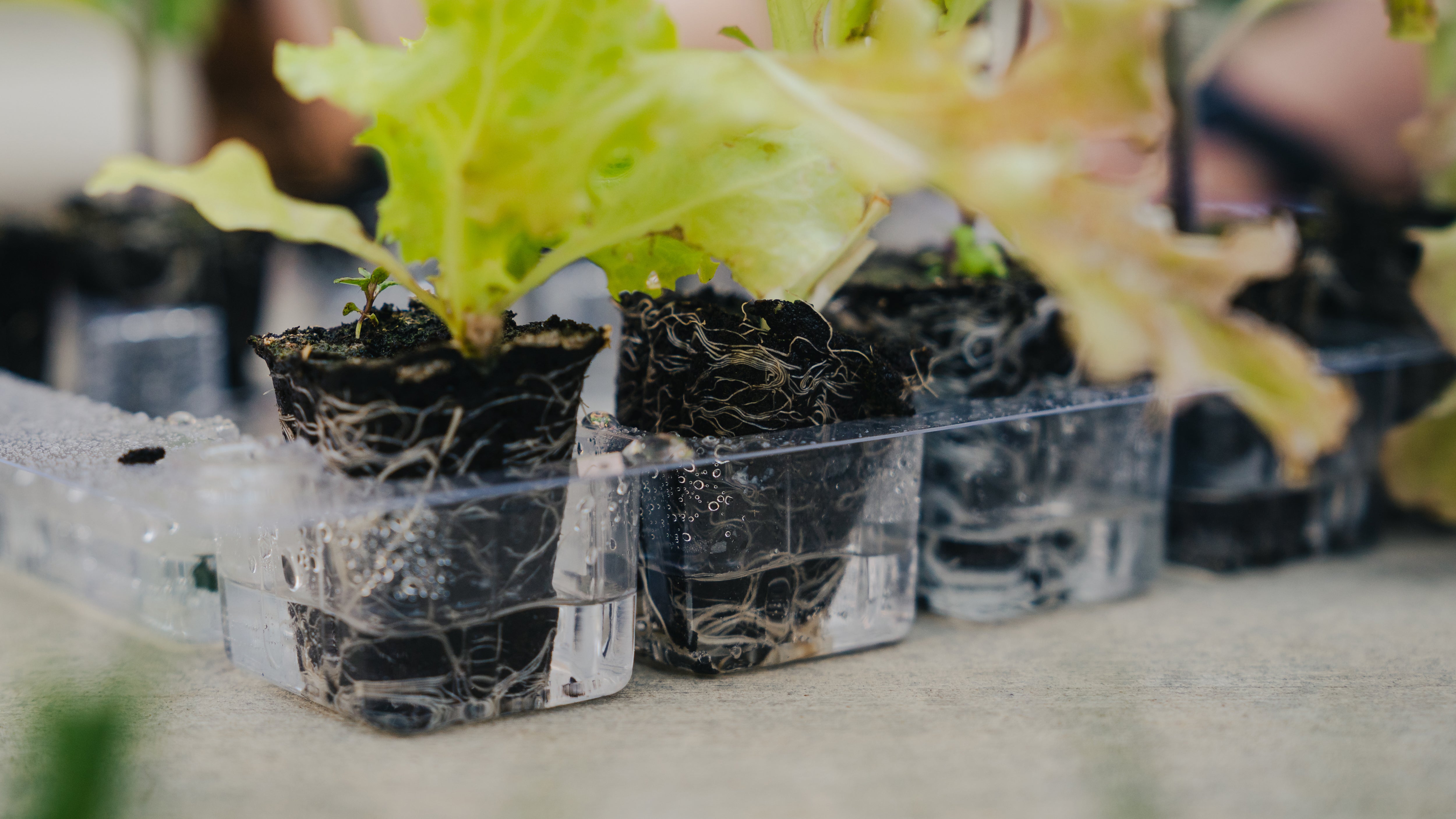
Where to Plant?
The good news is that plants aren't mean, picky house guests who only want to stay in your finest room. Have you ever seen weeds growing out of a sidewalk? That goes to show you that plants really do want to grow!
But there are some things that you can do to make sure they can be comfy, healthy, and ready to grow you some really delicious food! We're going to try and make it as simple as possible to make this happen.
To answer the WHERE question, we need to think about WHAT plants need. That's what's going to tell us where we need to put them.
Plants are like people when they're on vacation-- they want some good SUN, tasty DRINK, and delicious FOOD.
Sun
SUN- Look for a place that has sun for at least half the day. If you wanted to get a tan in your garden, where would you sit? That’s probably the best spot for your plants to get some sun. If you already have an area and don't want to move it, that's OK. Just be sure that your plants will get sun at least half the day (the more the better).
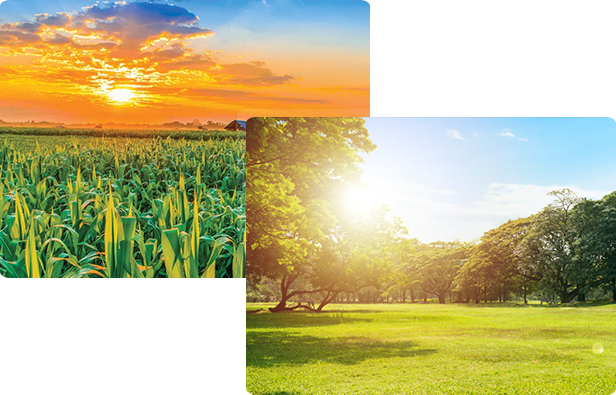
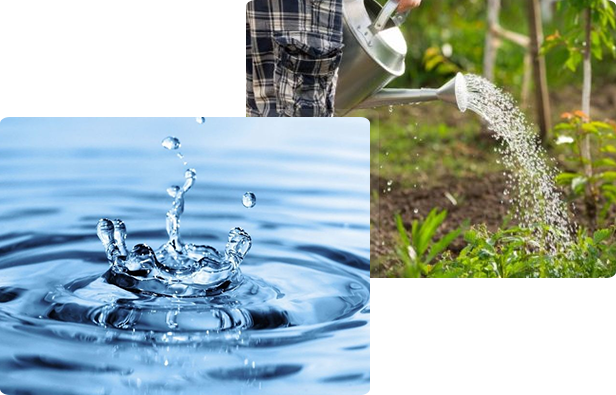
Water
WATER-Your plants should always have damp soil-- not too dry, not too wet. Think of a delicious moist cake; that’s how damp your soil should be. So be sure you plant where you have irrigation or where you’ll remember to water often to keep the soil moist. Forgetting to water for a few too many days is the #1 reason we see plants not make it. If you want to make it easier on yourself (or lucky enough to already have it) a drip irrigation system can take the work out of watering buy automating it for you. You can click HERE to see some great starter kits and other watering tools. HERE is a guide on setting up drip irrigation.
Food
Soil is a plant's food (apart from CO2, but that's getting more complicated than we need to!). The better the soil, the happier your plants will be. Generally the darker and softer the dirt is, the better. Think of a mud pie dessert with the crushed Oreo base-- that’s what delicious soil for plants would look like. Adding in some fertilizer every time you plant helps make sure your plants will be well fed! CLICK HERE to see some products we recommend. You can also always add some bags of high quality soil from your local gardening store too.
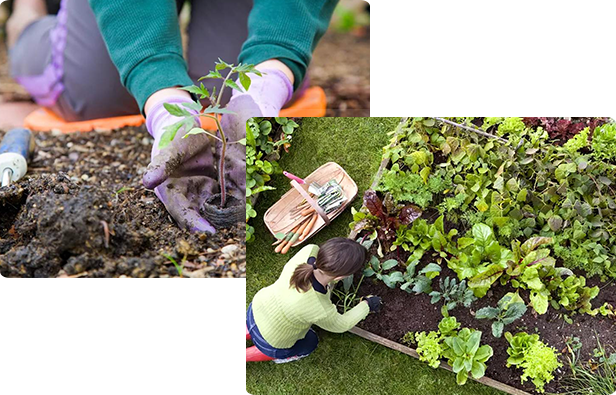
Types of places to plant
Ground
Ground- Plants have been growing in the ground for a very long time. There's really no need to reinvent the wheel. Your plants can grow happily in your yards' soil if they have sun and water. Adding PLANT FOOD here would be a big benefit here to make sure your soil has all the nutrients your plants need.
Growing in the ground is the cheapest option, though it's also the option that needs the most prep-work, since you'll need to get the ground ready for your plants. If you want to do this, and are starting from scratch, click HERE to see step by step instructions on how to do it right.
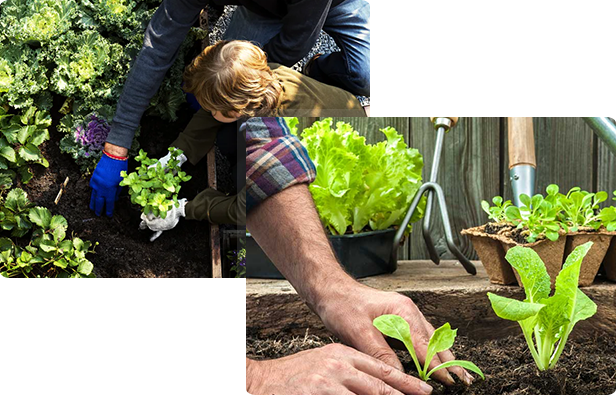
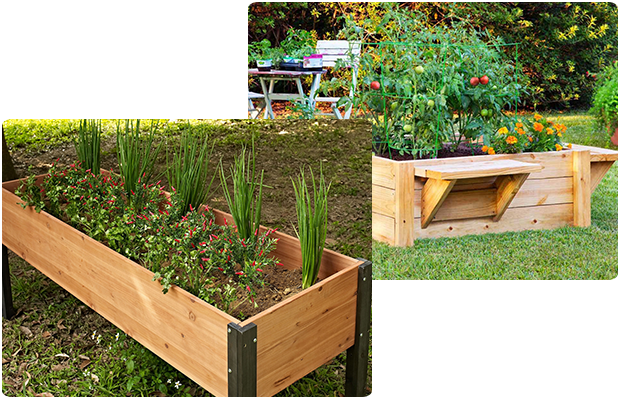
Planter Boxes/ Raised Beds
Planter Boxes/ Raised Beds- These are great! They help raise your plants off the ground so you don't have to bend down. They also help keep weeds out. They look good, and can be a wonderful option for your garden. Check out some of the ones that we recommend HERE.
If you like DIY projects, you can also make some wonderful planter boxes using recycled wood, stone, brick, or a variety of other materials. HERE is a link on how to build a wooden planter box yourself. Remember that you'll want to fill these with good soil.
Pots
Pots- Pots are similar to planter boxes, except that you normally put fewer plants into a pot than you do a planter box. They can be really beautiful items to have sprinkled around your garden or in your kitchen windowsill. They are great for herb gardens. You can see some options HERE.
If you're planting in pots, make sure they have a hole in the bottom of them. This is important to make sure the pots don't fill with water and accidentally drown your plant roots. You'll also want to be careful not to over-water in pots, since they don't easily drain water.
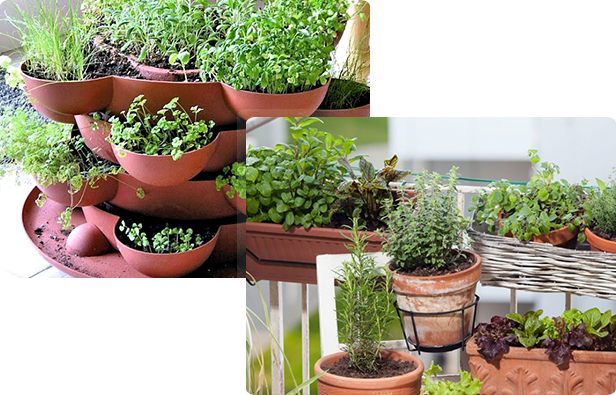
So, you know what to look for and have a good idea of what you have, we need to think about where exactly you'll want to plant. Remember, plants aren't picky house guests.
Just like easy house guests don't mind if they go in the guest bedroom, on the couch, or in the camper, so plants can be happy in a variety of different homes. It all depends on what you have and what you'd want to get if you don't have it. Just remember, they need SUN, WATER, and FOOD (good soil).
How to Plant?
Now that you know where you're going to plant and have the soil ready, it's time to get your plant babies in the ground. If you haven't already, SUBSCRIBE NOW so that you can be sure to get the right plants delivered at the perfect times for your #EasiestGardenEver.
The most important things to remember as you're getting started are:
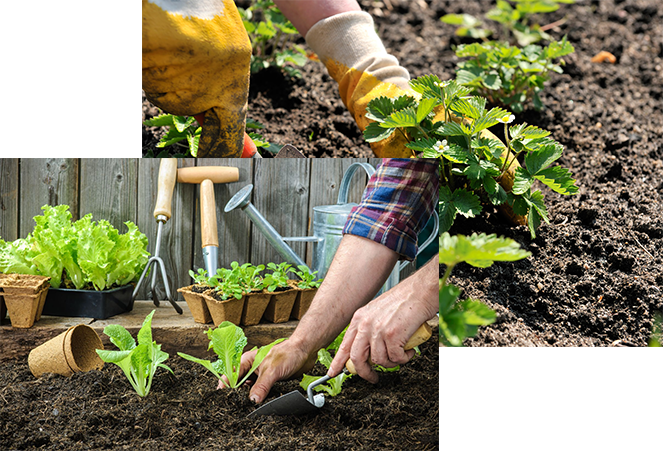
Plant Hardening- if it's HOT
If the weather looks to be really hot around the time when you're planting or if you live in a place where the sun is really strong (like the desert), click HERE to see the steps of plant hardening.
Hardening your plants helps them acclimate to your area and avoid getting sunburned after you plant them. This is good to do if you think it will be over 80-90 degrees around the time you're planting and important to do if you think it will be 90-100+ when you're planting.
Plant Quickly
Your plant babies have been hidden in a dark box for one or two days, and plants love light, not darkness. Because of this, it's really important to plant your plantlings as soon as you can after you receive them.
Planting early morning or late afternoon is best-- try shooting for planting the afternoon that you receive them, after 5 PM. That helps make sure that they start off in cooler temperatures and not the head of the midday sun.
HARDENING- If you need a bit more time and aren't ready to plant quite yet, click HERE to see a trick you can use to hold your plants up to a week.
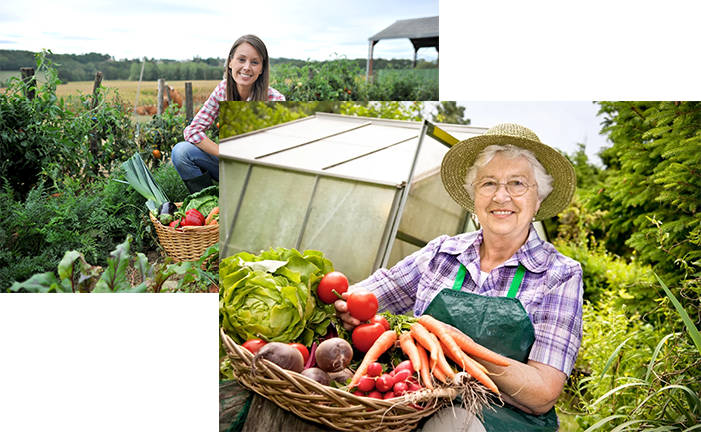
-
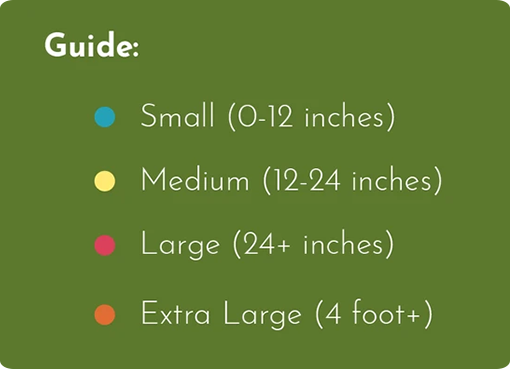
It's easy to brush past this, since the plants look similar right now. But pretty soon, you'll be amazed at how different they are. Laying out your plants properly spaced before you plant helps make this easier.
-
Plant Spacing
Plants come in all shapes and sizes. Think about how much bigger an oak tree is compared to a rose plant. It's the same with veggies and herbs. They all look similar now, but pretty soon, they'll be all different shapes and sizes!
To make it easy for you, we've divided them into four sizes- small, medium, large, extra large. These sizes are written on the packages, on the quick start guide with an example layout, and in the zines. The zines have even more detailed info on how to space if you really want to optimize your garden.
We recommend that you lay out all your plantlings on the surface of the area where you're planning on putting them, according to the spacing they need. That way, you can make sure you have the layout you want before you actually start planting.
Don't worry if it's not perfect-- the plants will still grow if they're too close together. But it will be like being in coach in an airplane. We want to help your plants sit in first class, with the perfect amount of space to move around and enjoy growing! To do this, follow the spacing guides as best you can.
Keys to Success
You've got a box full of babies-- baby plants! They're full of life and wanting to grow and flourish. Now that you've found a great spot in your arden for them to get their tan on, and you've planted them spaced so they'll have enough room to grow into, there's just a few things you need to remember.
Water
Thirsty babies are sad babies. Make sure you water at least every few days, keeping the soil nice and moist. Put it into your calendar NOW (3-4 times a week or every other day when you're getting started). The hotter it is, the more frequently your babies need water. You can find some watering tools HERE.
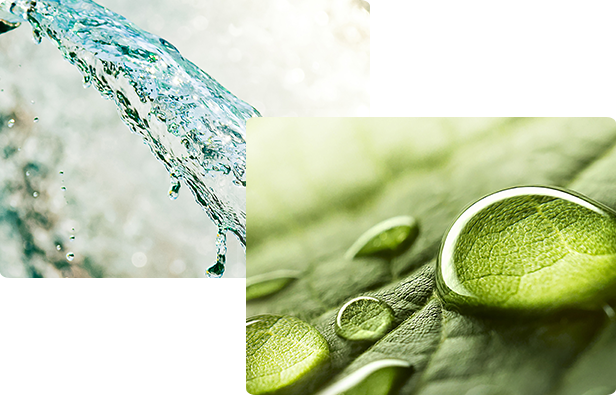
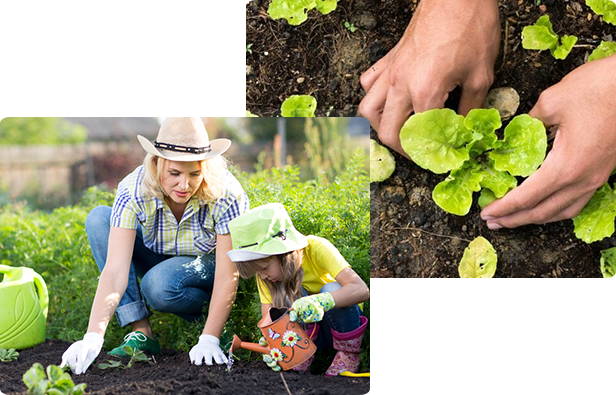
Food
Food- Hangry babies (hungry angry babies) are no fun! If you can, be sure to add fertilizer when you plant (or shortly thereafter). You can find some great options HERE.
Keep an Eye out for Pests.
Your plants are delicious! Unfortunately, we're not the only ones who think so... Bugs and diseases like the tasty varieties we've sent to you.
Just how medicine makes kids feel better if they're sick, we've got a few suggestions that can help fight off pests and diseases. If something looks off, it's much better to address it early on. Click HERE for some products that can help with this.
Your plants should normally last around 2-5 months, but helping them stay as healthy as they can during that time will give you your best garden ever!
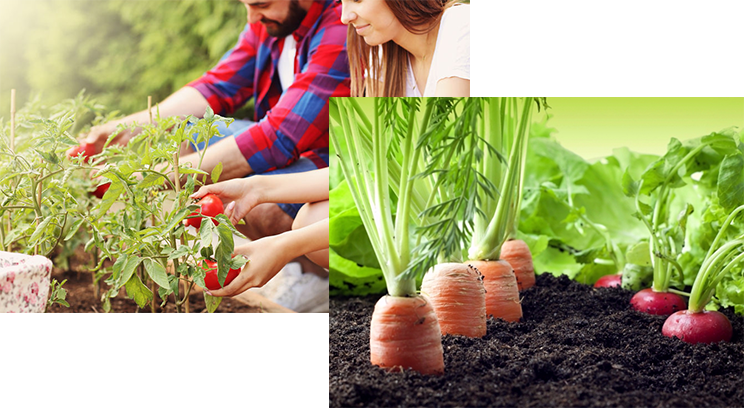
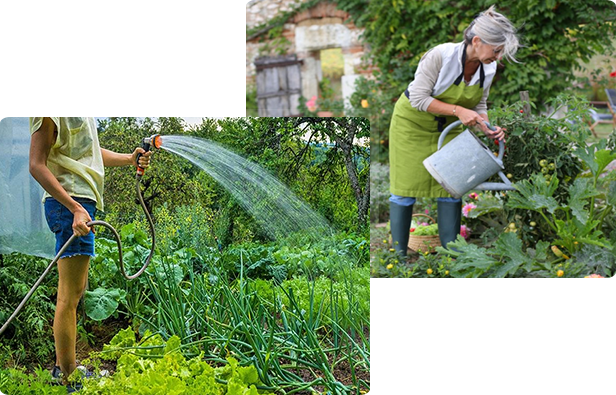
Water, Water, Water
Water, Water, Water- we're serious about the water. Do it! Keep doing it! And you won't regret it.
The only exception is for potted or indoor plants. Plant roots like water, but they don't like to be drowning. Pots drain slowly, so be sure to add enough water to keep the soil moist, but not too much water where the plants drown.
A moisture sensor can help make sure you're giving the right amount of water. You can see some recommended products for watering HERE.



